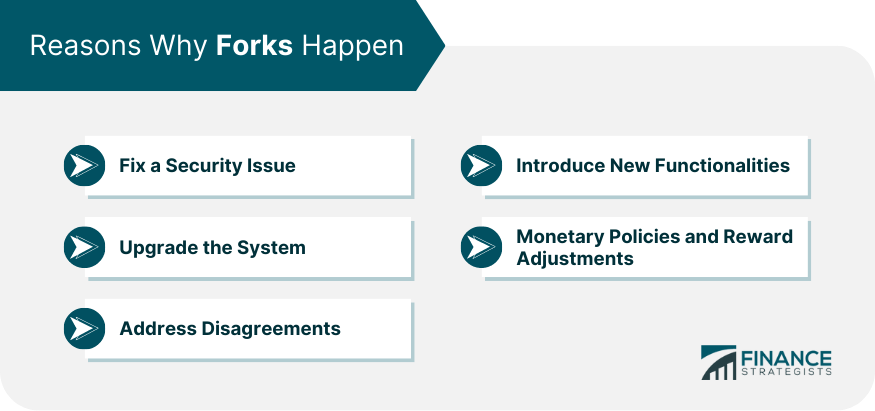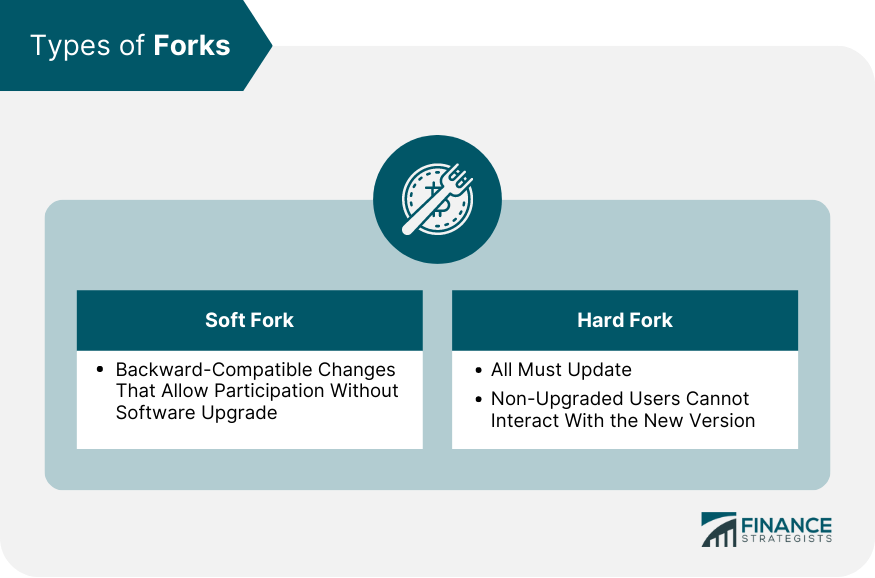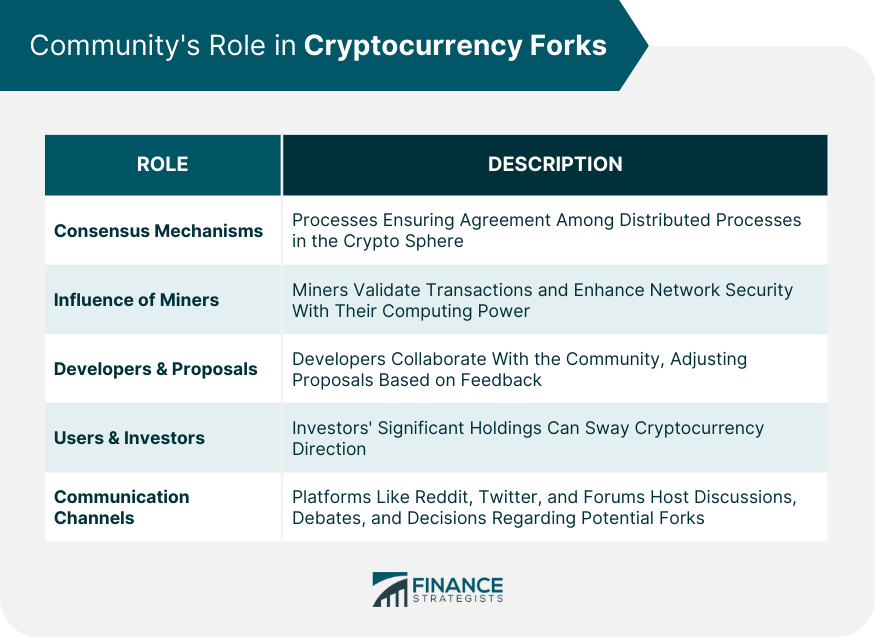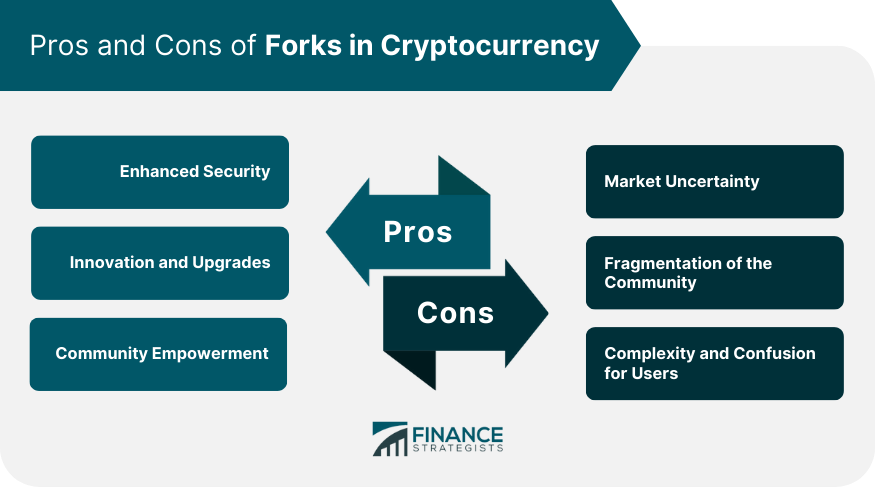In the realm of cryptocurrencies, a "fork" refers to a divergence in the blockchain. Imagine a blockchain as a book of transactions; a fork represents a point where this book divides into two, allowing for two distinct versions of events to unfold. Depending on how they are implemented and accepted, forks can be classified as "soft" or "hard." A soft fork is backward-compatible, meaning that non-upgraded nodes will still recognize new transactions as valid. A hard fork, however, is not backward-compatible. Once it's initiated, all network participants must adhere to the new rules. Forks facilitate necessary changes and improvements to a blockchain system. Moreover, it can enable different factions to create separate versions of the coin, each reflecting their visions and values. Consequently, forks not only act as a tool for technological adaptation but also for community-driven evolution in the decentralized world of cryptocurrency. Understanding how forks operate requires a deeper look into the blockchain technology that underpins cryptocurrencies. At its core, a blockchain is like a digital ledger, a list of records called blocks linked together. Each block contains a group of confirmed transactions, and these blocks are connected in chronological order. Every participant in the network has a copy of this ledger, and they all work together to confirm new transactions and add them to new blocks. As with any technology, sometimes changes are required. These changes might be introduced to: Fix a Security Issue: Every now and then, vulnerabilities are identified in the cryptocurrency protocol. Developers then come up with fixes to address these security gaps, which might necessitate a fork. Upgrade the System: As the network grows, it might need enhancements, like processing transactions faster. Upgrades can improve transaction speed, reduce costs, or introduce new features, necessitating a fork. Address Disagreements: Not everyone will always agree on the direction or the rules of a cryptocurrency. When major disagreements happen, a fork can allow both groups to proceed with their preferred solutions. Introduce New Functionalities: Sometimes, developers or the community might want to introduce entirely new features or functions that were not part of the original design. Monetary Policies and Reward Adjustments: Cryptocurrencies have built-in economic models, which reduce the reward miners receive for adding blocks. If there's a desire to alter economic or reward models, it might lead to a fork. Soft Fork: A soft fork introduces changes that are backward-compatible. This means that even if you don't upgrade your software, you can still participate in the network. However, you might not benefit from the new features or changes. Hard Fork: A radical change that is not backward-compatible. Once it's activated, everyone participating must update to the new version. Those who don't upgrade are left on the old chain and can't interact with the new one. Consensus Mechanisms: In the crypto sphere, consensus mechanisms are processes used to achieve agreement on a single data value or a single state of the network among distributed processes or systems. Influence of Miners: Miners are essential for validating and adding new transactions to the blockchain. Their computing power and participation underpin the security and functionality of the network. Developers & Proposals: While developers suggest changes, they closely interact with the community, adjusting their proposals based on feedback, ensuring that changes align with the broader user base's desires. Users & Investors: Investors, particularly those with substantial holdings, can sway the direction of a cryptocurrency. Their acceptance or withdrawal of support during a fork can impact the economic viability of the new or old chain. Communication Channels: Platforms like Reddit, Twitter, and cryptocurrency-specific forums are hotbeds for discussions, debates, and decisions related to potential forks. Cryptocurrencies evolve and thrive through mechanisms such as forks, offering a range of benefits that drive their adaptability and growth. Whether it's patching potential security holes or improving the overall stability of the cryptocurrency, forks help in maintaining the integrity and trustworthiness of the digital asset. By addressing vulnerabilities promptly, forks prevent malicious actors from exploiting these weaknesses, thus safeguarding user funds and transactions. Forks allow for the integration of new features and capabilities into the cryptocurrency. Whether it's enhancing transaction speeds, enabling more advanced smart contracts, or introducing improved privacy measures, forks facilitate the growth and modernization of digital currency to meet evolving demands. Forks allow the community—a combination of developers, miners, and everyday users—to voice their preferences, opinions, and concerns about the currency's direction. If a consensus is achieved, changes are implemented; if not, a new path can be created that aligns with a segment of the community's vision. While forks in cryptocurrencies can lead to advancements and innovations, they also come with their share of drawbacks. Forks can introduce significant volatility and uncertainty in the cryptocurrency market. Traders and investors might be unsure about which version of the currency will gain the most support, leading to unpredictable price swings and speculative behavior, which can deter long-term investment and stability. When a cryptocurrency undergoes a fork, it can result in the division of its community. If consensus isn't reached, it can lead to two separate groups supporting two different versions of the currency. This fragmentation can dilute the strength and influence of the original community, potentially weakening both the original and the new cryptocurrency. Post-fork, users might find themselves with coins on both the old and new blockchain, leading to confusion about which version to use, where to store them, and how transactions work on each chain. Furthermore, if service providers, like exchanges or wallets, decide not to support the new fork, users might face challenges accessing or utilizing their holdings. Forks stand as pivotal moments of divergence within the blockchain, akin to splitting a transaction ledger into distinct narratives. Soft forks, being compatible with existing systems, validate new transactions across both old and upgraded nodes. Conversely, hard forks necessitate a unanimous transition to new protocols. Forks play a crucial role in evolving blockchain systems, enabling both technological upgrades and community-led evolution. They empower various factions to manifest their ideals in separate coin versions. As mechanisms of change, forks embody both benefits and drawbacks. Enhancing security by rectifying vulnerabilities, bolsters user trust. Their embrace of innovation fosters growth, catering to modern needs. Yet, they also introduce market volatility, splinter communities, and confuse users. These facets underscore the complex interplay between technical progress and community dynamics in shaping the cryptocurrency landscape.What Is Forks in Cryptocurrency?
How Forks in Cryptocurrency Work
Blockchain Basics
Why Do Forks Happen?
These can include new smart contract functionalities, privacy features, or more. This might require a major change, leading to a fork.
Types of Forks

Community's Role in Cryptocurrency Forks
They ensure that every participant has a say, preventing any single entity from unilaterally changing the rules.
Pros of Forks in Cryptocurrency
Enhanced Security
Innovation and Upgrades
Community Empowerment
Cons of Forks in Cryptocurrency
Market Uncertainty
Fragmentation of the Community
Complexity and Confusion for Users

Conclusion
Forks in Cryptocurrency FAQs
A fork in cryptocurrency refers to a divergence in the blockchain, splitting the transaction history into two paths, allowing for distinct versions of the blockchain to develop.
A soft fork is compatible with older versions, while a hard fork is not. Soft forks allow non-upgraded nodes to still recognize new transactions, whereas a hard fork requires all participants to adopt new rules.
Forks occur for various reasons, including security fixes, system upgrades, addressing disagreements within the community, introducing new functionalities, and altering monetary policies or rewards.
Forks empower the community to express preferences and drive changes. They can lead to innovation but also create market uncertainty, division within the community, and confusion among users.
Consensus mechanisms ensure agreement among participants in a cryptocurrency network, preventing unilateral rule changes. Consensus is crucial during forks to determine the direction the blockchain should take and to maintain network integrity.
True Tamplin is a published author, public speaker, CEO of UpDigital, and founder of Finance Strategists.
True is a Certified Educator in Personal Finance (CEPF®), author of The Handy Financial Ratios Guide, a member of the Society for Advancing Business Editing and Writing, contributes to his financial education site, Finance Strategists, and has spoken to various financial communities such as the CFA Institute, as well as university students like his Alma mater, Biola University, where he received a bachelor of science in business and data analytics.
To learn more about True, visit his personal website or view his author profiles on Amazon, Nasdaq and Forbes.











